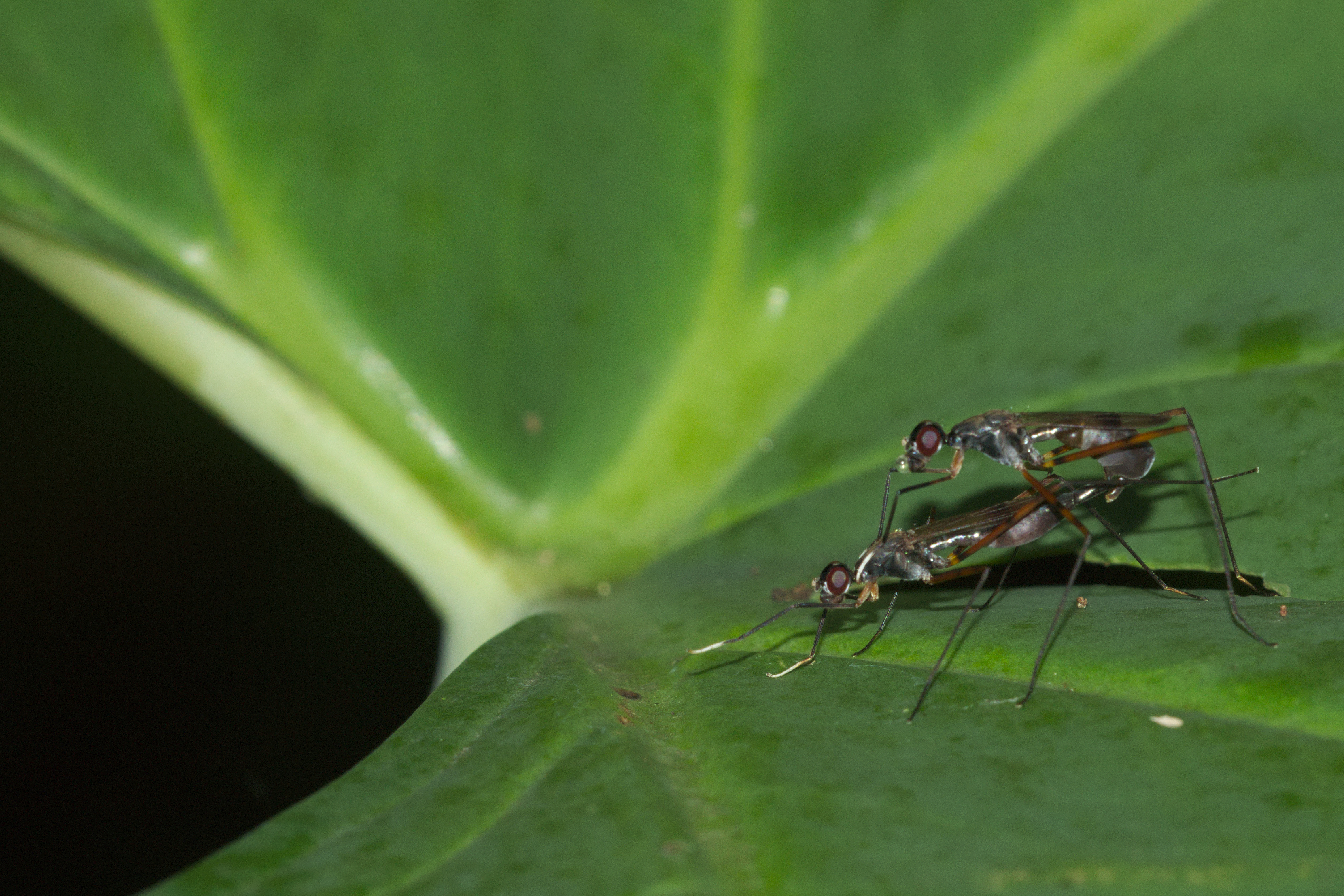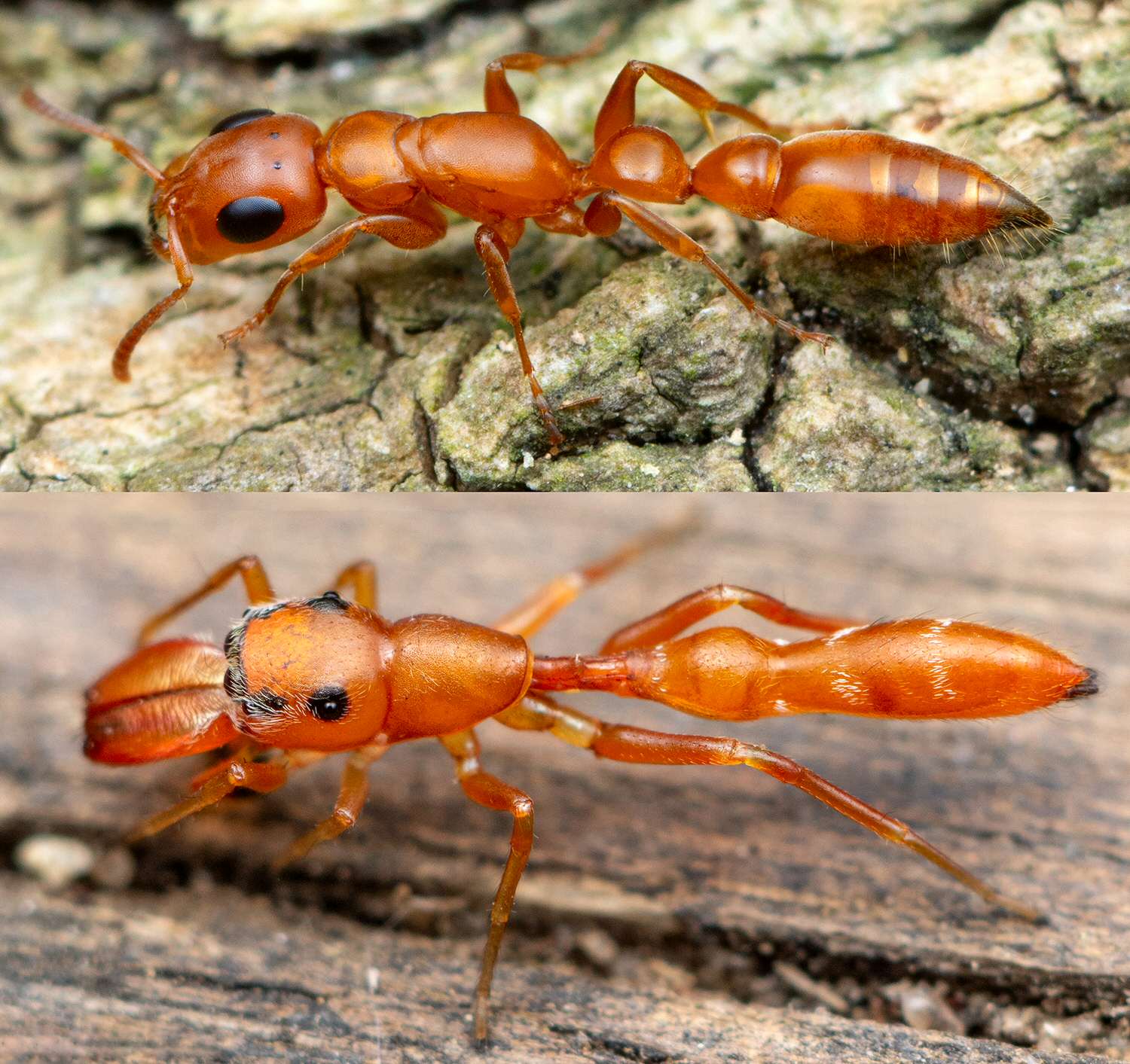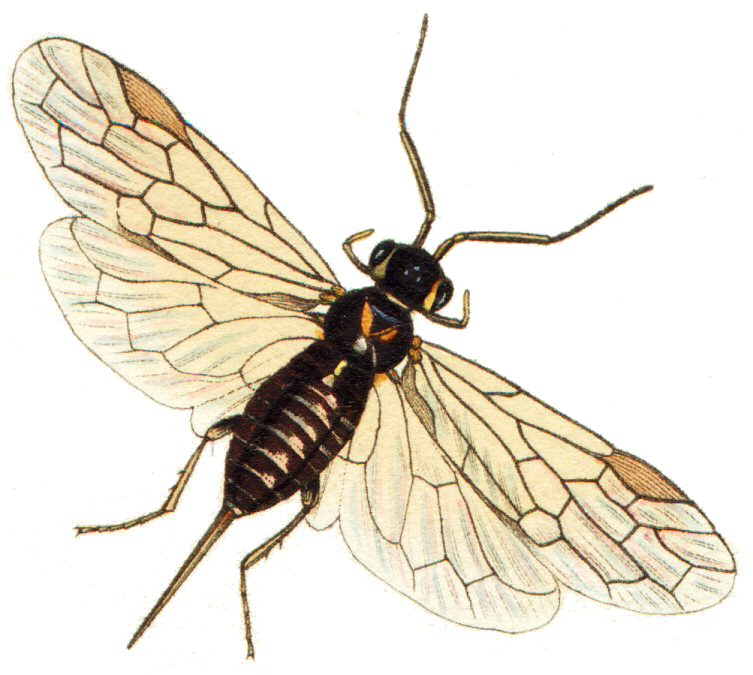|
Badisis
''Badisis'' is a Micropezidae, stilt-legged fly genus with only one known species, ''Badisis ambulans''. This is a wingless, haltere-less fly with an Ant mimicry, ant-like appearance. It is only found in the Southwest Australian bioregion of Western Australia. Dependent on the rare Albany Pitcher Plant (''Cephalotus follicularis'') for its development, this fly is also a rare species. Despite its many apomorphic features, the details of its morphology (biology), morphology suggest a close relationship to the diverse genus ''Metopochetus'', which is also in the tribe (biology), tribe Metopochetini. The fossil stilt-legged fly ''Electrobata tertiaria'' from Baltic amber of the Paleogene also shows some similarities; it may be a very basal (evolution), basal member of the Metopochetini, close to the divergence between these and the Eurybatinae. Description Apart from its lack of wings and halteres, ''B. ambulans'' has a less unusual Morphology (biology), habitus than other members o ... [...More Info...] [...Related Items...] OR: [Wikipedia] [Google] [Baidu] |
Micropezidae
The Micropezidae are a moderate-sized family of acalyptrate muscoid flies in the insect order Diptera, comprising about 500 species in about 50 genera and five subfamilies worldwide, (except New Zealand and Macquarie Island).McAlpine, D.K. (1998). Review of the Australian stilt flies (Diptera: Micropezidae) with a phylogenetic analysis of the family. ''Invertebrate Taxonomy'' 12:55–134. (with key to Australian species) They are most diverse in tropical and subtropical habitats, especially in the Neotropical Region. Insects in this family are commonly called stilt-legged flies, after their characteristically long legs. The fore legs are markedly smaller than the other pairs. Mostly, they are long-bodied, often black flies, usually with infuscated (darkened) wings. Wings are reduced in the genera '' Calycopteryx'' and entirely absent in the ant-like ''Badisis ambulans''. Description For terms see Morphology of Diptera Very slender, small to large (3–16 mm) flies, they h ... [...More Info...] [...Related Items...] OR: [Wikipedia] [Google] [Baidu] |
Albany Pitcher Plant
''Cephalotus'' ( or ; Greek: ''κεφαλή'' "head", and ''οὔς''/''ὠτός'' "ear", to describe the head of the anthers) is a genus which contains one species, ''Cephalotus follicularis'' the Albany pitcher plant, a small carnivorous pitcher plant. The pit-fall traps of the modified leaves have inspired the common names for this plant, which include 'Albany pitcher plant", "Western Australian pitcher plant", "Australian pitcher plant", or "fly-catcher plant." It is an evergreen herb that is endemic to peaty swamps in the southwestern corner of Western Australia. Description ''Cephalotus follicularis'' is a small, low growing, herbaceous species. Evergreen leaves appear from underground rhizomes, are simple with an entire leaf blade, and lie close to the ground. The insectivorous leaves are small and have the appearance of moccasins, forming the 'pitcher' of the common name. The pitchers develop a dark red colour in high light levels but stay green in shadier conditions. ... [...More Info...] [...Related Items...] OR: [Wikipedia] [Google] [Baidu] |
Ant Mimicry
Ant mimicry or myrmecomorphy is mimicry of ants by other organisms. Ants are abundant all over the world, and potential predators that rely on vision to identify their prey, such as birds and wasps, normally avoid them, because they are either unpalatable or aggressive. Spiders are the most common ant mimics. Additionally, some arthropods mimic ants to escape predation (protective mimicry), while others mimic ants anatomically and behaviourally to hunt ants in aggressive mimicry. Ant mimicry has existed almost as long as ants themselves; the earliest ant mimics in the fossil record appear in the mid Cretaceous alongside the earliest ants. Indeed one of the earliest, ''Burmomyrma'', was initially classified as an ant. In Wasmannian mimicry, mimic and model live commensally together; in the case of ants, the model is an inquiline in the ants' nest. Wasmannian mimics may also be Batesian or aggressive mimics. To simulate ants' powerful defences, mimics may imitate ants chemically w ... [...More Info...] [...Related Items...] OR: [Wikipedia] [Google] [Baidu] |
Abdomen
The abdomen (colloquially called the belly, tummy, midriff, tucky or stomach) is the part of the body between the thorax (chest) and pelvis, in humans and in other vertebrates. The abdomen is the front part of the abdominal segment of the torso. The area occupied by the abdomen is called the abdominal cavity. In arthropods it is the posterior (anatomy), posterior tagma (biology), tagma of the body; it follows the thorax or cephalothorax. In humans, the abdomen stretches from the thorax at the thoracic diaphragm to the pelvis at the pelvic brim. The pelvic brim stretches from the lumbosacral joint (the intervertebral disc between Lumbar vertebrae, L5 and Vertebra#Sacrum, S1) to the pubic symphysis and is the edge of the pelvic inlet. The space above this inlet and under the thoracic diaphragm is termed the abdominal cavity. The boundary of the abdominal cavity is the abdominal wall in the front and the peritoneal surface at the rear. In vertebrates, the abdomen is a large body c ... [...More Info...] [...Related Items...] OR: [Wikipedia] [Google] [Baidu] |
Basal (evolution)
In phylogenetics, basal is the direction of the ''base'' (or root) of a rooted phylogenetic tree or cladogram. The term may be more strictly applied only to nodes adjacent to the root, or more loosely applied to nodes regarded as being close to the root. Note that extant taxa that lie on branches connecting directly to the root are not more closely related to the root than any other extant taxa. While there must always be two or more equally "basal" clades sprouting from the root of every cladogram, those clades may differ widely in taxonomic rank, species diversity, or both. If ''C'' is a basal clade within ''D'' that has the lowest rank of all basal clades within ''D'', ''C'' may be described as ''the'' basal taxon of that rank within ''D''. The concept of a ' key innovation' implies some degree of correlation between evolutionary innovation and diversification. However, such a correlation does not make a given case predicable, so ancestral characters should not be imputed to th ... [...More Info...] [...Related Items...] OR: [Wikipedia] [Google] [Baidu] |
Halteres
''Halteres'' (; singular ''halter'' or ''haltere'') (from grc, ἁλτῆρες, weights held in the hands to give an impetus in leaping) are a pair of small club-shaped organs on the body of two orders of flying insects that provide information about body rotations during flight. Insects of the large order Diptera (flies) have halteres which evolved from a pair of ancestral hindwings, while males of the much smaller order Strepsiptera (stylops)Merriam-Webster: stylops broadly: an insect of the order Strepsiptera/ref> have halteres which evolved from a pair of ancestral forewings. Halteres oscillate rapidly along with the wings and operate like vibrating structure gyroscopes: any rotation of the plane of oscillation causes a force on the vibrating halteres by the Coriolis effect. The insect detects this force with sensory organs called campaniform sensilla and chordotonal organs located at the base of the halteres and uses this information to interpret and correct its posit ... [...More Info...] [...Related Items...] OR: [Wikipedia] [Google] [Baidu] |
Morphology (biology)
Morphology is a branch of biology dealing with the study of the form and structure of organisms and their specific structural features. This includes aspects of the outward appearance (shape, structure, colour, pattern, size), i.e. external morphology (or eidonomy), as well as the form and structure of the internal parts like bones and organs, i.e. internal morphology (or anatomy). This is in contrast to physiology, which deals primarily with function. Morphology is a branch of life science dealing with the study of gross structure of an organism or taxon and its component parts. History The etymology of the word "morphology" is from the Ancient Greek (), meaning "form", and (), meaning "word, study, research". While the concept of form in biology, opposed to function, dates back to Aristotle (see Aristotle's biology), the field of morphology was developed by Johann Wolfgang von Goethe (1790) and independently by the German anatomist and physiologist Karl Friedrich Burdach ... [...More Info...] [...Related Items...] OR: [Wikipedia] [Google] [Baidu] |
Petiole (insect)
In entomology, petiole is the technical term for the narrow waist of some hymenopteran insects, especially ants, bees, and wasps in the suborder Apocrita. The petiole can consist of either one or two segments, a characteristic that separates major subfamilies of ants. Structure The term 'petiole' is most commonly used to refer to the constricted first (and sometimes second) metasomal (posterior) segment of members of the hymenopteran suborder Apocrita (ants, bees, and wasps). It is sometimes also used to refer to other insects with similar body shapes, where the metasomal base is constricted. The petiole is occasionally called a pedicel, but in entomology, that term is more correctly reserved for the second segment of the antenna; while in arachnology, 'pedicel' is the accepted term to define the constriction between the cephalothorax and abdomen of spiders. The plump portion of the abdomen posterior to the petiole (and postpetiole in the Myrmicinae) is called the gaster ... [...More Info...] [...Related Items...] OR: [Wikipedia] [Google] [Baidu] |
David McAlpine
David (; , "beloved one") (traditional spelling), , ''Dāwūd''; grc-koi, Δαυΐδ, Dauíd; la, Davidus, David; gez , ዳዊት, ''Dawit''; xcl, Դաւիթ, ''Dawitʿ''; cu, Давíдъ, ''Davidŭ''; possibly meaning "beloved one". was, according to the Hebrew Bible, the third king of the United Kingdom of Israel. In the Books of Samuel, he is described as a young shepherd and harpist who gains fame by slaying Goliath, a champion of the Philistines, in southern Canaan. David becomes a favourite of Saul, the first king of Israel; he also forges a notably close friendship with Jonathan, a son of Saul. However, under the paranoia that David is seeking to usurp the throne, Saul attempts to kill David, forcing the latter to go into hiding and effectively operate as a fugitive for several years. After Saul and Jonathan are both killed in battle against the Philistines, a 30-year-old David is anointed king over all of Israel and Judah. Following his rise to power, David c ... [...More Info...] [...Related Items...] OR: [Wikipedia] [Google] [Baidu] |
Apocrita
Apocrita is a suborder of insects in the order Hymenoptera. It includes wasps, bees, and ants, and consists of many families. It contains the most advanced hymenopterans and is distinguished from Symphyta by the narrow "waist" ( petiole) formed between the first two segments of the actual abdomen; the first abdominal segment is fused to the thorax, and is called the propodeum. Therefore, it is general practice, when discussing the body of an apocritan in a technical sense, to refer to the mesosoma and metasoma (or gaster) rather than the "thorax" and "abdomen", respectively. The evolution of a constricted waist was an important adaption for the parasitoid lifestyle of the ancestral apocritan, allowing more maneuverability of the female's ovipositor. The ovipositor either extends freely or is retracted, and may be developed into a stinger for both defense and paralyzing prey. Larvae are legless and blind, and either feed inside a host (plant or animal) or in a nest cell provisio ... [...More Info...] [...Related Items...] OR: [Wikipedia] [Google] [Baidu] |
Paleogene
The Paleogene ( ; British English, also spelled Palaeogene or Palæogene; informally Lower Tertiary or Early Tertiary) is a geologic period, geologic period and system that spans 43 million years from the end of the Cretaceous Period million years ago (annum, Mya) to the beginning of the Neogene Period Mya. It is the beginning of the Cenozoic Era of the present Phanerozoic Eon. The earlier term Tertiary Period was used to define the span of time now covered by the Paleogene Period and subsequent Neogene Period; despite no longer being recognised as a formal stratigraphy, stratigraphic term, 'Tertiary' is still widely found in earth science literature and remains in informal use. Paleogene is often abbreviated "Pg" (but the United States Geological Survey uses the abbreviation PE for the Paleogene on the Survey's geologic maps). During the Paleogene, evolution of mammals, mammals diversified from relatively small, simple forms into a large group of diverse animals in the wake of ... [...More Info...] [...Related Items...] OR: [Wikipedia] [Google] [Baidu] |








